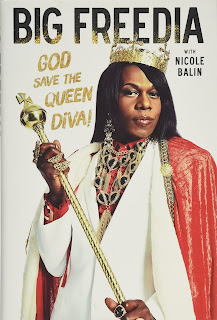The 1709 Blog is happy to host the following contribution by Hugo Cox (Hamlins), concerning the recent joint authorship decision of the Court of Appeal of England and Wales in Kogan v Martin [see also IPKat here].
Here's what Hugo writes:
When creative collaboration goes
wrong
One
of the most distinctively European contributions
of European law to UK copyright law has been its test for originality (being
one of the requirements for copyright protection). Previously UK courts had
looked for the prosaic inputs of labour, skill or judgment. Now they ask
whether the work is the author’s ‘intellectual creation’, looking to see if it
reflects the author’s personality, expressing free and creative choices – there
must be a certain … je ne sais quoi,
you might say.
There
is some doubt as to whether this new test has made much difference in deciding
which works do or do not acquire copyright protection. However, in the law of
joint authorship, a change seems unmistakable. In the past, English courts have
required a contributor to input significant skill and labour to earn the title
and rights of a joint author. So, for example, an attractive 16-bar saxophone
solo did not meet the threshold. Now the Court of Appeal has affirmed the ‘relatively
undemanding’ requirement is, once again, to contribute elements which express
the contributor’s own intellectual creation. We know from the CJEU’s Infopaq judgment that this can be
achieved in just eleven words.
Kogan
v Martin
This
conclusion of the Court of Appeal was arrived at in its judgment of 9 October in
Kogan v Martin,
a case concerning the screenplay for Florence
Foster Jenkins, a film which starred Meryl Streep and Hugh Grant. The
question was whether it had been written solely by Nicholas Martin, as had been
decided in the Intellectual Property Enterprise Court in 2017, or whether Julia
Kogan was joint author. The Court of Appeal was not content with the reasoning
of the lower court and ordered a retrial.
It
seemed Martin had held the pen and Kogan had contributed only to the first
drafts. However, the Court emphasized a joint author can be someone who only
offers suggestions to the writer – she does
not necessarily have to put pen to paper or have the last word on what goes
into the script. Contributions to plot ideas or inventing characters are on an
equal footing with contributions to the execution of a work. And if a work has
been created through a series of drafts, inputs into the earlier drafts count.
Complex relationships, complex
law
The
Court set exacting standards for the assessment of the complex evidence of
creative collaboration. The fact witnesses’ recollections may be imperfect does
not absolve the judge of his duty to take those recollections into account
alongside any documentary evidence and to come to a conclusion about the nature
of the interaction between the parties and their contributions. Were Julia
Kogan’s contributions akin to those of a researcher, or was there a joint
creative process? The assessment is highly fact-specific and difficult, but
must be undertaken.
Though it seems the quantitative threshold for
joint authorship has been lowered, the overall assessment of the evidence has
become ever more complex, subtle and exacting. And the legal concepts are slippery.
Joint authors must be engaging in a ‘common design’ – according to the Court of
Appeal this is not something Ezra Pound was doing when he made extensive
revisions to Eliot’s The Waste Land.
The Court explained, perhaps less than helpfully: ‘he was acting as a friend
and critic and not a collaborator in a common design’. And appealing though the
European ‘intellectual creation’ test is, can you necessarily spot someone’s
personality in their output and when exactly are choices free and creative?
We live in a time when creative collaboration
is widespread – from pop bands to sitcom writers’ rooms to the interactive
world of the internet. It’s a complex picture, and one which the law should try
to avoid complicating further.





